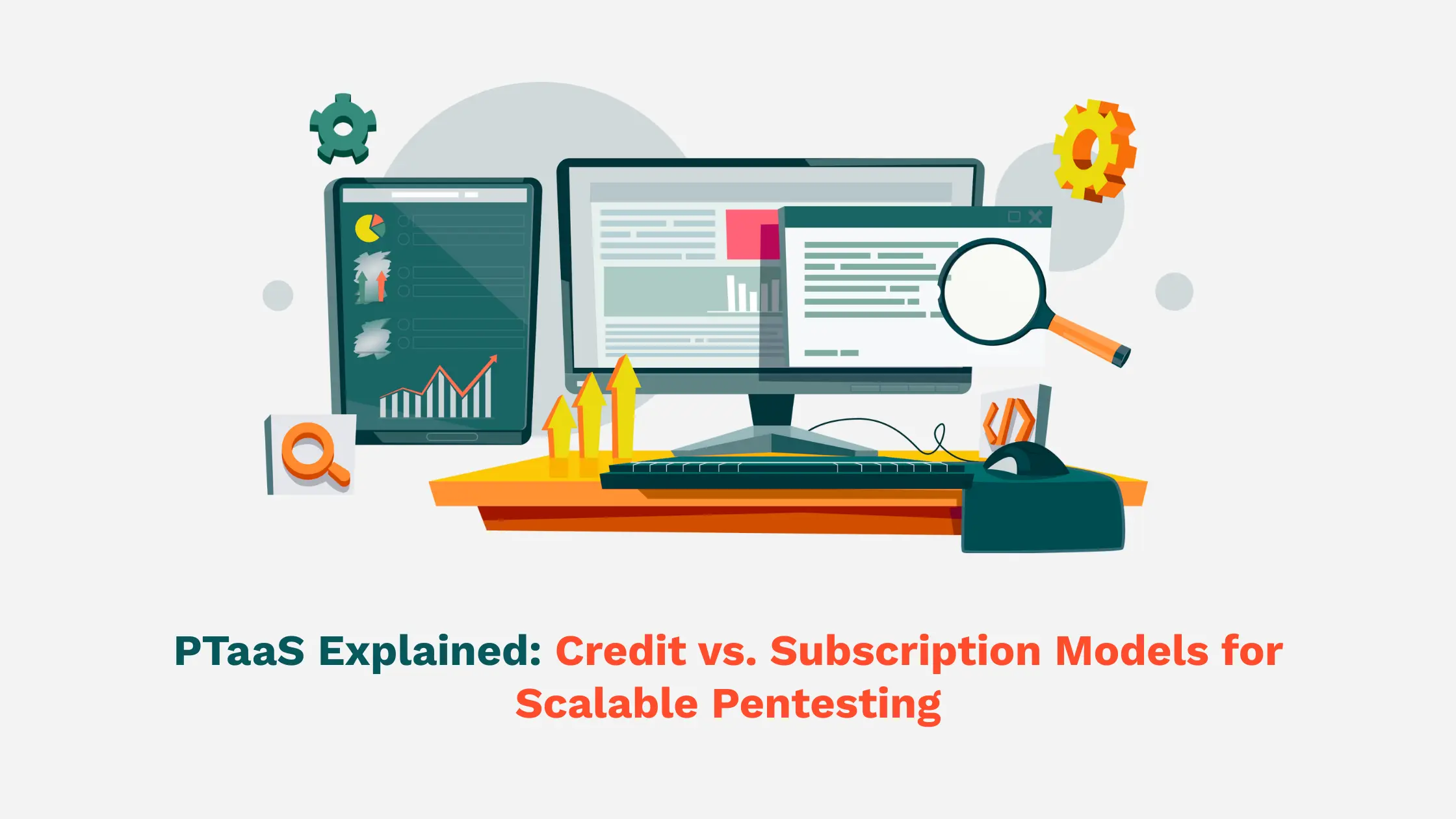
Security testing can no longer afford to be slow, siloed, or reactive. Penetration Testing as a Service (PTaaS), also known as Pentest as a Service, offers a modern, agile, and continuous penetration testing solution.
Unlike traditional annual testing methods, PTaaS supports today’s fast-moving software development and deployment cycles.
In this guide, we explore two scalable PTaaS delivery models: credit-based and subscription based penetration testing.
Each model offers unique benefits tailored to specific operational and security needs. Choosing the right model can help your team stay compliant, reduce risk, and align security with continuous development.
Traditional penetration testing provides value but is often limited in scope and frequency. These assessments act like a snapshot in time.
Once completed, they fail to reflect new risks that emerge from code changes, third-party integrations, or infrastructure updates.
For modern organizations operating in SaaS, DevOps, or hybrid cloud environments, annual or one-off penetration tests cannot keep up.
This gap in testing can allow critical vulnerabilities to go unnoticed and unaddressed for months, putting both data and reputation at risk.
The credit-based PTaaS model provides maximum flexibility. Organizations purchase a pool of testing credits in advance. These credits can be used across various types of assets and test scopes.
How it works:
Ideal for:
Key Benefits:
The subscription based PTaaS model is designed for teams that need continuous, scheduled testing across fixed applications or environments.
It provides consistent security validation with predictable pricing.
How it works:
Ideal for:
Key Benefits:
.webp)
While automated scanners are useful for identifying common issues, they often miss complex threats.
ioSENTRIX prioritizes manual testing backed by custom threat modeling to uncover critical vulnerabilities. We simulate real-world attack techniques across:
Security should move at the speed of development. ioSENTRIX PTaaS integrates seamlessly with your DevSecOps workflows, including:
Manage everything in one place:
.webp)
Switching to PTaaS is not just a technological upgrade, it’s a strategic one. If you face any of the following situations, it’s time to consider Penetration Testing as a Service:
Traditional penetration testing served its purpose, but it can’t keep up with today’s software development cycles. PTaaS offers continuous visibility, faster fixes, and better alignment with modern workflows.
Penetration Testing as a Service (PTaaS) provides a modern, scalable approach to securing today’s fast-moving tech environments.
Whether you prefer the flexibility of a credit-based model or the predictability of a subscription based penetration testing plan, PTaaS enables your team to detect, respond to, and fix vulnerabilities faster.
Credit-based PTaaS is a flexible model where companies purchase testing credits. These can be used on any asset type and roll over quarterly, offering maximum agility.
Subscription based penetration testing is a recurring service that includes regular manual assessments, vulnerability scans, and retesting within a flat-rate model.
Credit-based PTaaS is ideal for DevOps because it supports on-demand testing, aligned with sprint cycles, releases, or sudden changes in infrastructure.
Yes. PTaaS offers continuous, deeper coverage, faster remediation, and real-time visibility, making it a full replacement for outdated annual testing models.
Lorem ipsum dolor sit amet, consectetur adipiscing elit, sed do eiusmod tempor incididunt ut labore et dolore magna aliqua. Ut enim ad minim veniam, quis nostrud exercitation ullamco laboris nisi ut aliquip ex ea commodo consequat. Duis aute irure dolor in reprehenderit in voluptate velit esse cillum dolore eu fugiat nulla pariatur.
Block quote
Ordered list
Unordered list
Bold text
Emphasis
Superscript
Subscript